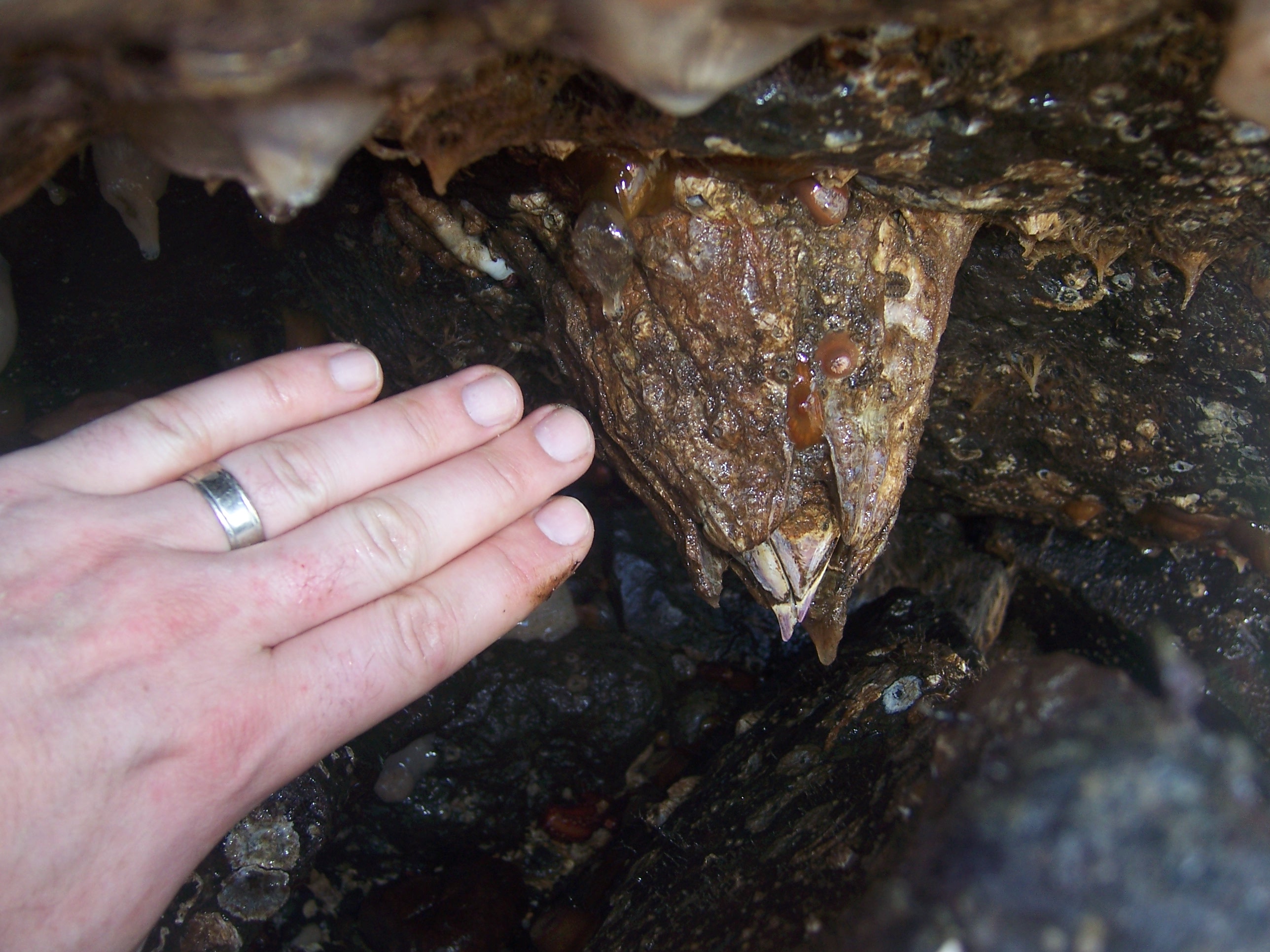
The subphylum Crustacea contains different classes of organisms:
Class Malocostraca- crabs, shrimp, krill, and crayfish. This class is the most widly known and is identified by the hard exterior shell, and segmented body contain ing 19 divisions. To the untrained eye, these segments are difficult to identify, especially in the larger crabs. Careful inspection of the underside reveals the outline of thin, fused segments.
Similarities in the genera can also be found in the antannae. The Crustaceans are the only members of the Arthropoda to have two distinct antannae. Close inspection may be necessary to identify these extremities, especially in the Cancer and Pugettis spp. but they are easily visible on the shrimps and hermit crabs (as seen in the picture to the left).
Crustaceans are further identified by their unique leg structure. Each limb is divided at the base into two distinct appendages. The outside limb has been lost in the many of the swimming and walking legs of the crustaceans, but the biramous structures reveal themselves under close inspection. This is most evident in the mouthparts of the crabs and shrimps.
Class Ciripedia- the barnacles. As specialized as limbs have become in the crustaceans, none are more so than those of the barnacles. A quick glance at these sessile, filter-feeders makes the observer wonder how they were ever classified! As the organism feeds however, the secret becomes clear; the thin, whispy appendages are segmented and count ten in number. The barnacle's shell is also divided into characteristic segments, although there may be only one moveable hinge joint.
These crustaceans might be the easiest to observe on any seashore in the Pacific Northwest. They are found covering most rocks and concrete pilings, with the larger of the species found within the low rocky intertidal.
